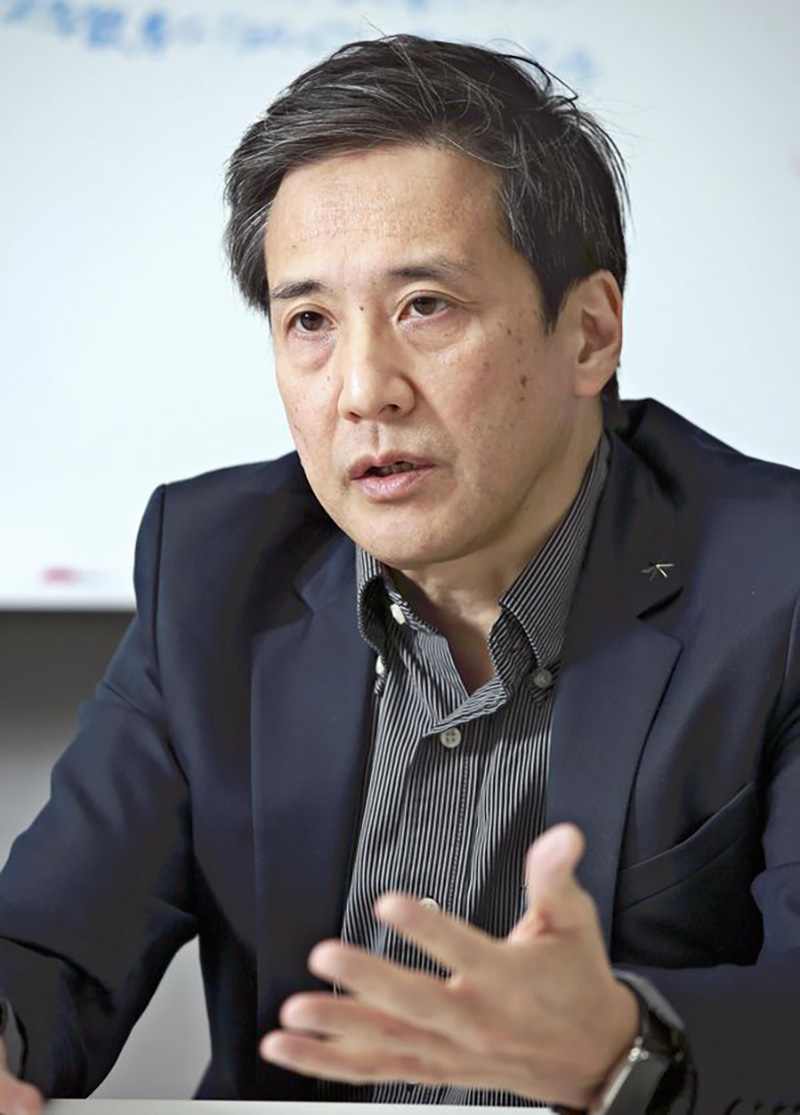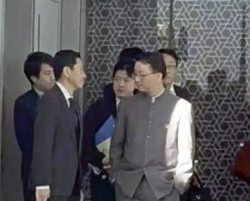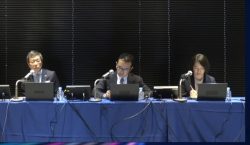
Hideaki Anan
12:09 JST, January 18, 2022
The year 2022 is expected to continue to pose challenges for Japan with the pandemic, foreign affairs, the economy and other issues. This is the third installment in a series of articles on how authoritative figures in various fields view such topics. The below was excerpted from remarks by Hideaki Anan, Kanagawa Prefecture director general of medical crisis measures, in a recent Yomiuri Shimbun interview.
The omicron variant of the coronavirus is a variant that is particularly worrying. Especially for elderly people who received the second dose of a COVID-19 vaccine more than six months ago, because their protection against the virus has waned. At any rate, it is important to bring forward the booster schedule.
The central and local governments need to carefully examine how many beds they will be able to secure for coronavirus patients in the event of a sixth wave of the pandemic. But it is important to note that simply making a rough tally of beds in each hospital will be pointless if hospitals complain of being “short-staffed” or at “full capacity” when they are asked to accept patients.
By March 2021, the Kanagawa prefectural government had signed an agreement with each hospital on the number of beds they would be able to provide for coronavirus patients. Before signing the agreement, we asked officials at each hospital face to face many times for the number of beds they would be able to secure that would be supervised by a sufficient number of nurses. These efforts meant that even during the fifth wave of the pandemic in the summer of 2021 each hospital honored the agreement to secure a certain number of beds.
We established a system through which hospitals can check the availability of beds at other hospitals, which has encouraged hospitals to accept more patients as they think, “That hospital is working so hard, so we should do more.” We also assigned patients to hospitals according to the severity of symptoms under a system that we dubbed the “Kanagawa model.”
Despite these measures, the number of infections was greater than we had expected at the peak of the fifth wave and there were times when we struggled to cope. It is crucial to have a variety of carefully designed measures in place in preparation for a possible sixth wave.
In Kanagawa Prefecture, local medical associations and home nursing units have joined a system to monitor the health of patients at home and we are now able to implement the system in all municipalities.
Command tower
A review of the current administrative system is necessary so that the nation can improve its response in the event of future outbreaks.
The central government seems to be considering strengthening the functions of its command tower, but relevant laws are under the jurisdiction of different ministers. The central government is trying to repurpose a system that was designed for peacetime operations. The role sharing between the central government, prefectures and municipalities and the command structure is complicated and ineffective.
The authority of local governments should be clarified. Under the current infectious disease law, prefectural governments have limited authority to issue instructions or requests to cities and special wards with public health centers. This may be the result of decentralization, but decentralization does not work well in emergencies.
Kanagawa Prefecture has six cities with public health centers and the prefecture and the six cities have the same level of power. The prefectural government asks the cities for help in identifying patients and coordinating hospitalization, and if the municipalities agree to the requests they cooperate. Without a relationship of trust between the prefecture and these cities, it would be difficult to cooperate smoothly.
I would like to see a system under which prefectures are given strong authority to organize municipalities in times of crisis. Without such a system, policies implemented by the government will not flow quickly from the prefectures to the municipalities. Strengthening the central government’s command tower function alone is not enough.
If Kanagawa Prefecture and the six cities had been left to deal with the hospitalization of patients separately, we would not have been able to cope.
Although Japan has created systems to respond to natural disasters, the COVID-19 pandemic has highlighted a weakness in the nation’s response to disease-related disasters, which became evident in February 2020, when a large cluster of coronavirus infections was detected on the British-registered Diamond Princess cruise ship.
My team asked Kanagawa Gov. Yuji Kuroiwa to declare the cluster a disaster so that the central government’s Disaster Medical Assistance Team (DMAT) would be dispatched.
The legal justification was that the team had to respond if a disaster had occurred on the ship, but we need a system that allows us to dispatch medical teams without having to resort to such sophistry.
As time passes, bitter memories of the pandemic will likely be replaced with the joy of overcoming the crisis. Before the hardships are forgotten, I would like to see the introduction of legislation that changes the central and local governments systems.
Profile
Hideaki Anan was born in Tokyo in 1965. Anan graduated from Niigata University and became the vice president of Fujisawa City Hospital in 2019. He has also served as the director of the hospital’s emergency medical care center. Since 2020, he has concurrently served as Kanagawa prefecture’s director general of medical crisis measures. He is also a clinical professor at Tokyo Medical and Dental University. Anan, who specializes in emergency and disaster medical care, supervised the handling of the coronavirus outbreak on the Diamond Princess cruise ship in 2020.
"Politics" POPULAR ARTICLE
-

Japan to Charge Foreigners More for Residence Permits, Looking to Align with Western Countries
-

Japan to Support Central Asian Logistics Route That Bypasses Russia, Plan to Be Part of Upcoming Summit in Tokyo
-

Japan to Tighten Screening of Foreigners’ Residential Status by Providing Information of Nonpayment of Taxes
-

Takaichi Cabinet Approval Holds at 72% as Voters Back Aggressive Fiscal Stimulus, Child Benefits
-

Japan’s Government Monitors China’s Propaganda Battle Over Takaichi’s Taiwan Contingency Remark
JN ACCESS RANKING
-

Japan’s Hopes for Seafood Exports Shot Down in China Spat
-

Japan to Charge Foreigners More for Residence Permits, Looking to Align with Western Countries
-

Japan Exports Rise in October as Slump in U.S. Sales Eases
-

Keidanren Chairman Yoshinobu Tsutsui Visits Kashiwazaki-Kariwa Nuclear Power Plant; Inspects New Emergency Safety System
-

Niigata Gov. to OK Restart of N-Plant; Kashiwazaki-Kariwa May Be Tepco’s 1st Restarted Plant Since 2011

























